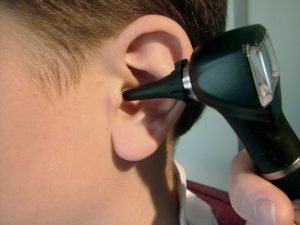Overview
Ear infections, medically known as otitis, are common infections that can affect the outer, middle, or inner ear. They are particularly prevalent in children but can affect individuals of all ages. These infections are often caused by bacteria or viruses that lead to inflammation, fluid buildup, and, in some cases, pain and pressure within the ear. Middle ear infections (otitis media) are among the most common types, especially in young children, while outer ear infections (otitis externa or swimmer’s ear) frequently occur after exposure to water or minor ear injuries.
Treatment options for ear infections depend on the type, severity, and whether the infection is bacterial or viral. Many mild cases resolve on their own, especially if the infection is viral, with symptoms managed by over-the-counter pain relievers and warm compresses. However, more severe or persistent infections, particularly those caused by bacteria, may require antibiotic treatment to prevent complications and alleviate symptoms more quickly. In cases of chronic ear infections or those leading to fluid buildup, other interventions, like ear tubes, may be necessary to facilitate drainage and prevent recurrent infections.
With timely treatment and proper care, most ear infections are manageable, and patients can expect a full recovery without lasting effects. Understanding the types of treatments available can help individuals manage symptoms effectively and reduce the risk of complications, such as hearing loss or recurrent infections.
Table of Contents
When to See a Doctor
For ear infections, seeking timely medical attention is essential, especially if symptoms persist or worsen. While some mild ear infections resolve on their own, others require prompt medical care to prevent complications such as hearing loss or the spread of infection to nearby areas.
You should consider seeing a doctor if:
- You or your child experience severe ear pain, especially if it lasts more than 48 hours.
- There is fluid or pus draining from the ear.
- Symptoms such as fever, headache, or hearing loss accompany the ear pain.
- You notice balance problems, swelling around the ear, or difficulty hearing.
- The infection appears to recur frequently, leading to chronic discomfort or ongoing fluid buildup.
Timely diagnosis and treatment can provide relief and help prevent more serious issues, such as chronic infections or lasting hearing impairment.
What Type of Doctor to Seek
If you suspect an ear infection, consult a primary care physician or an otolaryngologist (ear, nose, and throat specialist). A primary care doctor can often diagnose and treat straightforward ear infections, while an otolaryngologist may be necessary for severe, chronic, or recurrent cases that require specialized care.
For children, visiting a pediatrician experienced in treating ear infections in young patients can ensure the best approach, as children are especially prone to middle ear infections due to their ear anatomy.
What to Expect From Your First Doctor Visit
During your first visit, the doctor will conduct a comprehensive examination to determine the type and severity of the ear infection. This visit typically involves the following steps:
- Medical History and Symptom Discussion. The doctor will ask about recent symptoms, including pain, ear discharge, hearing changes, or a history of recent colds or sinus infections. They may also ask about previous ear infections, especially if you have a history of recurrent infections.
- Physical Examination. The doctor will examine the ear with an otoscope, a device that allows them to look inside the ear canal and eardrum. They will check for signs of inflammation, fluid buildup, or damage to the eardrum. This examination helps identify whether the infection affects the outer, middle, or inner ear.
- Hearing Tests. If hearing loss is present or if the infection is chronic, the doctor may perform or recommend a hearing test. This can help determine if there is any hearing impairment due to the infection or fluid in the middle ear, especially in children or those with recurring infections.
- Additional Testing (if needed). In cases of severe or recurrent infections, further tests, such as tympanometry (to assess eardrum function) or a fluid sample for bacterial culture, may be recommended to help diagnose and treat the infection more accurately.
Following the examination, the doctor will discuss the appropriate treatment options based on the diagnosis. This may include antibiotics for bacterial infections, pain management strategies, or, in chronic cases, a referral to an ENT specialist for additional treatment options like ear tubes. Seeking timely medical care can help alleviate symptoms quickly and reduce the risk of complications, such as hearing loss or spread of the infection.
Ear Infection Treatment Options

Image Source: newsnetwork.mayoclinic.org
Although there are various types of ear infections, the treatments and remedies for them are generally similar. Doctors may recommend one or more of the following treatments:
- Oral or Intravenous Antibiotics. For bacterial ear infections, doctors often prescribe antibiotics, either in pill form or, in more severe cases, through an IV. These antibiotics target the infection-causing bacteria, helping to reduce inflammation and clear up the infection more quickly. Completing the entire course of antibiotics is essential to prevent the infection from returning or worsening.
- Eardrops Containing Steroids or Antibiotics. Specialized eardrops, often containing antibiotics or steroids, may be prescribed to manage outer ear infections (otitis externa) or to reduce inflammation and pain in the ear canal. The steroids help to decrease swelling, while antibiotics target bacteria directly in the affected area. Eardrops can provide fast-acting relief and help prevent the infection from spreading further.
- Pain Relievers for Ear Pain. Over-the-counter or prescription pain relievers, such as acetaminophen or ibuprofen, may be recommended to relieve ear pain and reduce discomfort while the body fights the infection. These medications help control symptoms, especially during the first few days of the infection, when pain and inflammation can be intense.
- Surgical Intervention. In cases of recurrent or chronic ear infections, especially in young children, a doctor may recommend a minor surgical procedure. One common procedure is the insertion of ear tubes, which helps drain fluid from the middle ear, preventing infection buildup. This procedure can significantly reduce the frequency and severity of infections and improve hearing.
- Professional Ear Cleaning. In cases where the infection is due to wax buildup or foreign particles in the ear, a doctor may perform a professional ear cleaning. This procedure removes debris that may be causing the infection, making it easier for medications to reach the affected area and prevent further irritation or infection.
Each treatment option is tailored to the type and severity of the ear infection. Consulting a healthcare professional for an appropriate treatment plan is essential to ensure full recovery and avoid complications.
Ear Infection Prognosis
The prognosis for ear infections is generally positive, especially with prompt treatment. Most acute ear infections, particularly those affecting the middle ear (otitis media), resolve within a few days to a couple of weeks with appropriate care. Viral ear infections often improve on their own, while bacterial infections respond well to antibiotics, which can reduce symptoms within 24 to 72 hours. Pain and pressure typically lessen as the infection clears, allowing for a full recovery in most cases without any long-term effects.
In some individuals, particularly young children or those with recurrent infections, chronic ear infections may occur, potentially leading to persistent fluid buildup or temporary hearing loss. While these issues can cause discomfort and affect hearing in the short term, they are usually manageable with medical intervention, such as ear tubes or regular monitoring by an ear specialist. Even in cases of chronic ear infections, serious complications are rare with proper treatment, and hearing typically returns to normal once the infection resolves.
Overall, the outlook for individuals with ear infections is favorable, as early diagnosis and treatment can prevent complications and ensure a swift recovery. With careful management and preventive measures, such as avoiding prolonged water exposure or practicing good hygiene, most people can maintain healthy ear function and reduce the risk of recurrent infections.


